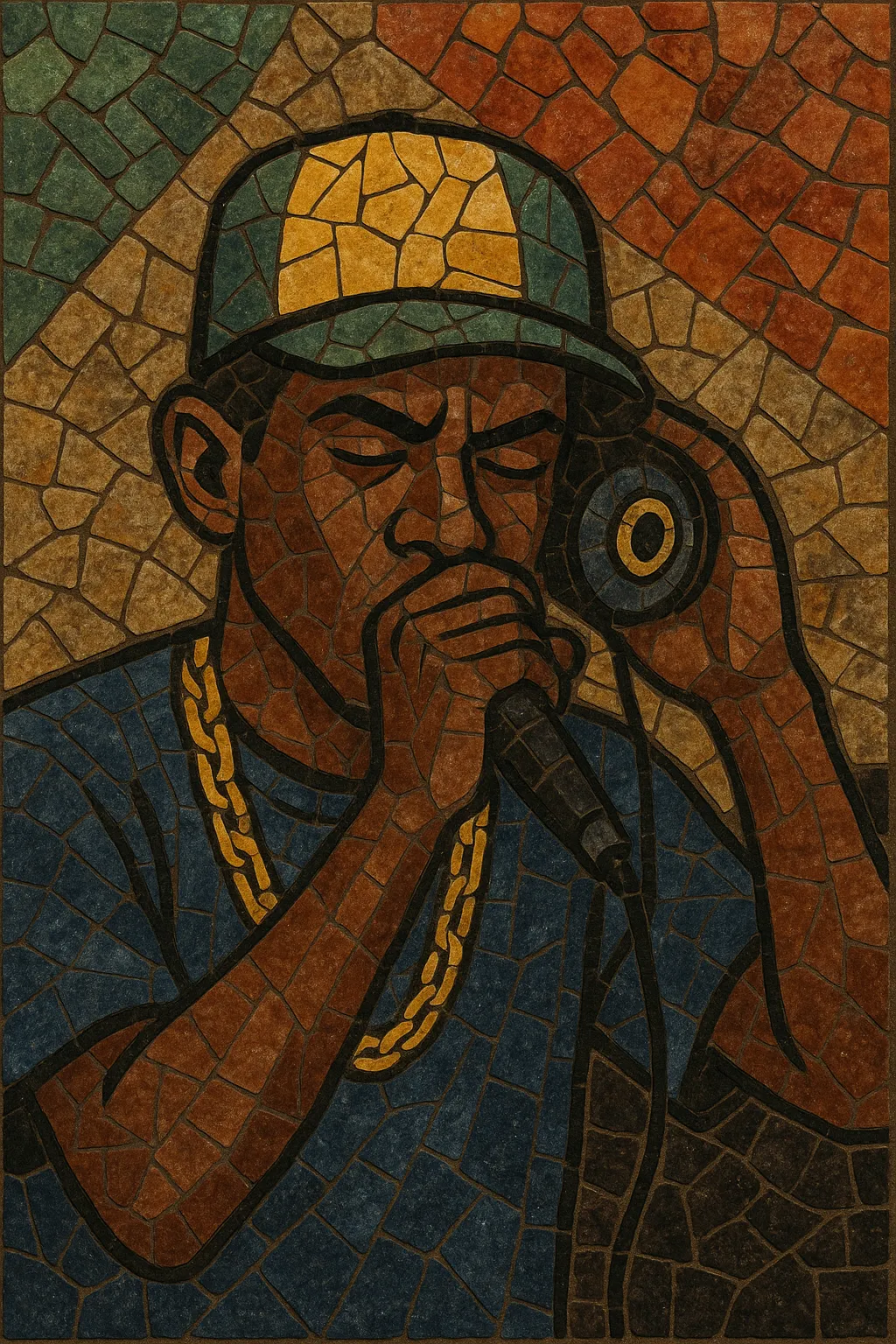Brazilian hip hop (often called "rap nacional") adapts the core aesthetics of U.S. hip hop—MC-led storytelling, sample-based beats, and DJ culture—to Brazilian realities, accents, and rhythms.
It balances gritty street reportage with poetic social critique, frequently referencing life in the periferias (urban outskirts), racism, police violence, and everyday resilience. Musically it ranges from classic boom-bap to trap-inflected productions and occasional fusions with samba, MPB, and funk carioca, creating a distinctly local cadence and swing.
Over time, it has grown from a grassroots movement centered on breakdance circles and DIY shows to a mainstream force, launching influential albums, cyphers, and festival circuits while nurturing powerful scenes in São Paulo, Rio de Janeiro, Belo Horizonte, and beyond.
Brazilian hip hop coalesced in the mid-to-late 1980s around breakdance gatherings—famously at the São Bento subway station in São Paulo—where DJs, MCs, b-boys, and graffiti artists forged a scene influenced by imported hip hop records, electro, and Miami bass. Early pioneers like Thaíde & DJ Hum and crews tied to dance circles helped translate the culture into Portuguese, embedding local slang and social realities.
The 1990s saw the emergence of foundational acts and albums. Racionais MC’s released defining records—Raio X Brasil (1993) and the landmark Sobrevivendo no Inferno (1997)—that articulated sharp critiques of inequality and systemic racism. Independent labels, community radio, and street markets helped rap circulate widely. The sound leaned on boom-bap, soul and MPB samples, and a sober, narrative delivery that became a hallmark of "rap nacional."
In the 2000s, artists expanded the palette. Marcelo D2 fused samba with hip hop on hits like A Procura da Batida Perfeita (2003). Planet Hemp members branched into solo careers, and the late Sabotage’s Rap é Compromisso! (2002) became a cult classic after his untimely death in 2003. Regional scenes flourished, while mainstream media (MTV Brasil, film soundtracks) brought broader exposure.
YouTube battles and cyphers (e.g., Batalha do Santa Cruz, Pineapple StormTV’s Poetas no Topo) energized a new generation, while streaming platforms lowered barriers. Artists like Emicida and Criolo bridged rap with MPB and global sounds; Djonga, BK’ and others injected trap sonics and bold, contemporary rhetoric. Women MCs (e.g., Karol Conká, Drik Barbosa, Tássia Reis) gained visibility, pushing new perspectives. Cross-pollination with funk carioca and trap (trap funk, Brazilian trap) reshaped club-oriented strands, while socially conscious lyricism remained central.
Brazilian hip hop is a national institution with strong local identities—from São Paulo’s hard-hitting narratives to Belo Horizonte’s trap wave—continuing to influence pop, funk, and Latin rap, and to serve as a platform for cultural pride and socio-political discourse.


